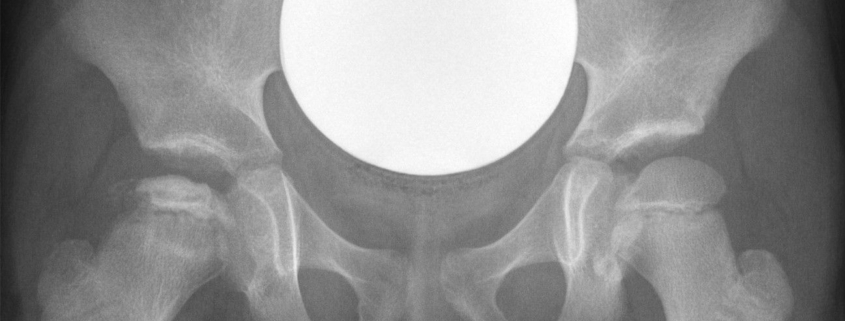
Perthes Disease
Overview
Perthes Disease, also known as Legg-Calve-Perthes Disease, is a rare childhood condition that affects the hip. It occurs when blood supply to the ball part of the hip joint, called the femoral head, is temporarily interrupted. Without enough blood, the bone begins to die, leading to a series of changes in the hip joint over several years. While the disease is not common, affecting about 5 out of 100000 children, it is important to understand as it can impact a child’s mobility and cause lifelong health issues.
Types
Perthes Disease is generally classified into four stages based on the progression of the condition:
- Initial stage (Necrosis): This is when the femoral head loses its blood supply and starts to die.
- Fragmentation stage: The body tries to remove the dead bone and replace it with new bone, causing the hip joint to appear fragmented.
- Reossification stage: New bone begins to form and the femoral head starts to solidify.
- Healing stage: The round shape of the femoral head is gradually restored.
Causes
The exact cause of Perthes Disease remains unknown. However, it is not contagious, hereditary, or due to any dietary lack. Some research suggests that it may be linked to certain environmental factors, like exposure to secondhand smoke.
Symptoms
The most common symptom of Perthes Disease is a limp, often painless, which can appear gradually or suddenly. Other symptoms include:
-
- Reduced range of motion in the hip
-
- Mild to moderate pain in the hip, thigh, or knee
-
- Muscle stiffness or weakness in the affected leg
-
- Shorter leg on the affected side
-
- Wasting of muscles around the hip
Diagnosis
Perthes Disease is usually diagnosed through a combination of physical examination and imaging tests. During the physical examination, the doctor will check your child’s hip for any signs of tenderness. Imaging tests such as X-rays or an MRI can help confirm the diagnosis, showing the condition of the hip bone and surrounding tissues.
Treatment Options
The goal of treatment for Perthes Disease is to relieve pain, improve hip function and maintain the round shape of the femoral head. The treatment is typically conservative at first, may include:
-
- Physical therapy to improve hip movement
-
- Pain relievers and anti-inflammatory medications
-
- Plaster casts, leg braces or splints to hold the hip joint in the best position for healing
In severe cases, surgical intervention may be necessary to reposition the femoral head within the socket.
Living With Perthes Disease
Living with Perthes Disease can be a challenge, but with the right approach, you can help manage the condition:
-
- Ensuring your child rests and reduces impact activities such as jumping and running
-
- Maintaining a nutritious balance diet to support bone health
-
- Maintain a regular physical therapy routine to improve mobility
-
- Using assistive devices, like crutches or wheelchairs, to increase independence
When to Seek Help
If your child experiences persistent or worsening hip pain, reduced range of motion in the hip, or develops a limp that lasts more than a week, it’s advisable to seek medical attention. Early diagnosis and treatment of Perthes Disease can help improve the prognosis and keep your child active and healthy.
